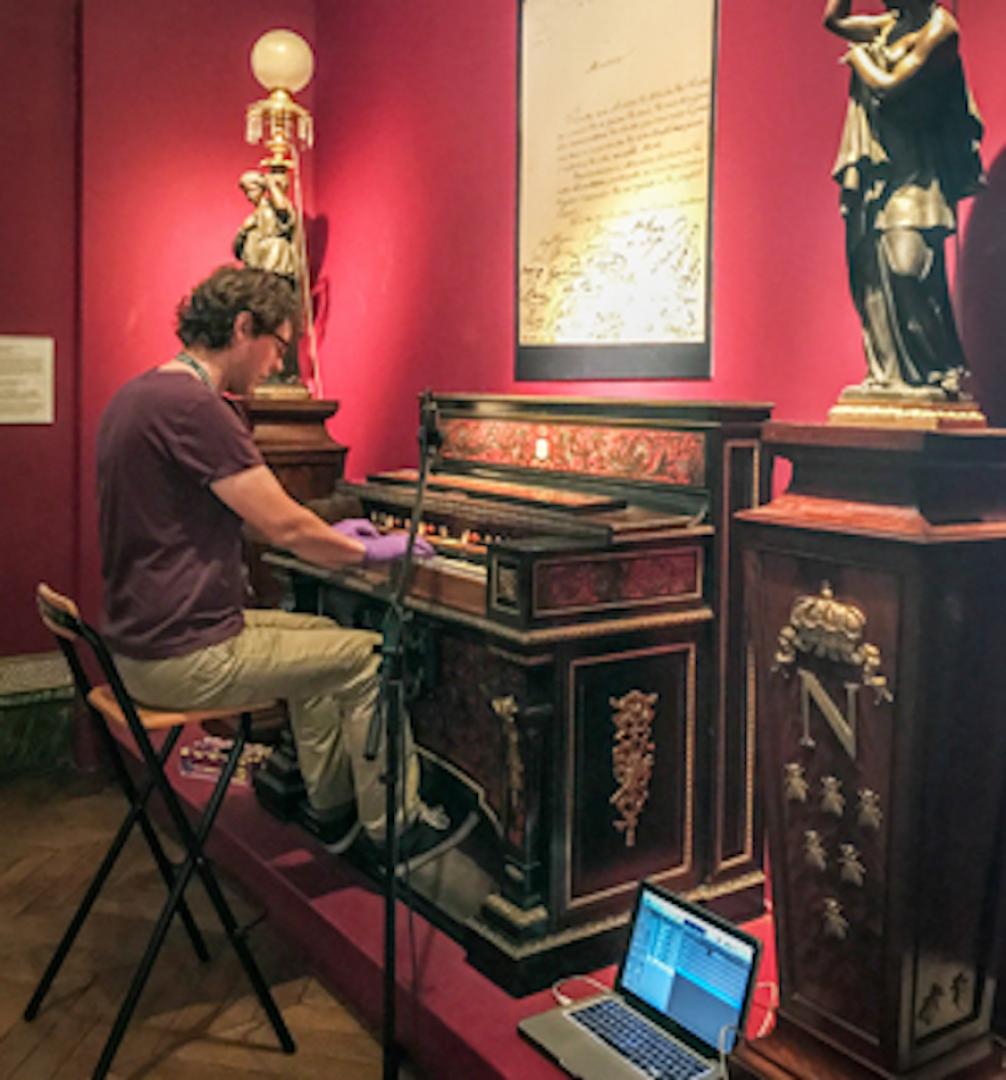In her regular column, Dorothy Blundell takes a sideways look at the collections of The Bowes Museum where she is a volunteer.
HEIR playing days are long since gone. Their polished wood façades hide their inner workings – their silenced voices.
These are ancient instruments which live in the dim light of the music room at The Bowes Museum.
But step into the room and listen. Pause awhile, close your eyes… and listen. The sound is music. The tune is meandering, aimless, never repeated.
Tranquil, meditative notes fill the air with a haunting beauty. This is “Song” , created by Northumberland artist, photographer and musician Kit Haigh.
He was among 2018’s #Untitled10 – when ten different artists were commissioned to present ideas that respond to the permanent collections.
He began with a tattered scrap of manuscript headed “Song” which he found in the museum archives.
It had previously been inside the Haxby square piano (maybe from around the time it was built in 1794).
It is the Haxby which very slowly and repeatedly plays the first nine notes of the Song manuscript.
Other keyboard instruments play various complementing notes but – and here’s the clever part – to no set pattern or rhythm, unless you count the computer algorithm, the program which controls the randomness with which each keyboard sounds.
Over time, spaces between the notes combine and diverge, creating phrases and sometimes chords, never to be repeated.
It is, at various moments, mournful, hopeful, melancholic and uplifting.
Josephine commissioned her own piano-cum-harmonium in about 1855, and although it now lives on the floor below the music room, it also has a role.
Despite being unplayed for more than a century, it was relatively in tune, so was used as the common pitch to tune the others.
A range of usable notes from each of the keyboards (including the Kirckman Harpsichord, Waite Cabinet Piano, Broadwood Piano-Forte, Haxby Square Piano and Bord Piano) was recorded and sensitively adjusted.
The sounds being heard are, in fact, the individual recordings relayed through speakers adjacent to each of the instruments.
Thanks to a project grant from Arts Council England and some additional funding from The Bowes Centre, “Song” is a permanent installation.
This soundscape of “generative music” imaginatively lights up the darkness of the room, changing the listener’s perception of the space, and even the way of seeing the paintings on the walls.
There is an emotional connection, through the music, to the past.
How easy it is to imagine Josephine playing her piano-cum-harmonium to amuse herself or perhaps entertaining guests at a supper party in her home at Louveciennes in 1858.
Of all our senses, hearing might be said to be the most powerful: one of the first senses we develop in the womb and one of the last we lose as we die.
And the power of music is huge. It can be used as a weapon of torture or a healing balm – and everything in between.
Many visitors have found themselves falling under the spell of Song.
It is as if the sleeping instruments are awakening, discovering they can “speak” again and starting to hold a conversation with each other.
Go and listen – you might find Song touches a chord with you, too.
To learn more about Song, see Kit Haigh’s video at https://vimeo.com/ 345686111.
Gentle Machines, by Kit Haigh, released a year ago, includes Song among four excerpts of his generative music. https://kithaigh .bandcamp.com/album/ gentle-machines-generative-music-1999-2019.
The Bowes Museum is open daily 10am to 5pm. For details, see thebowes museum.org.uk or call 01833 690606.






